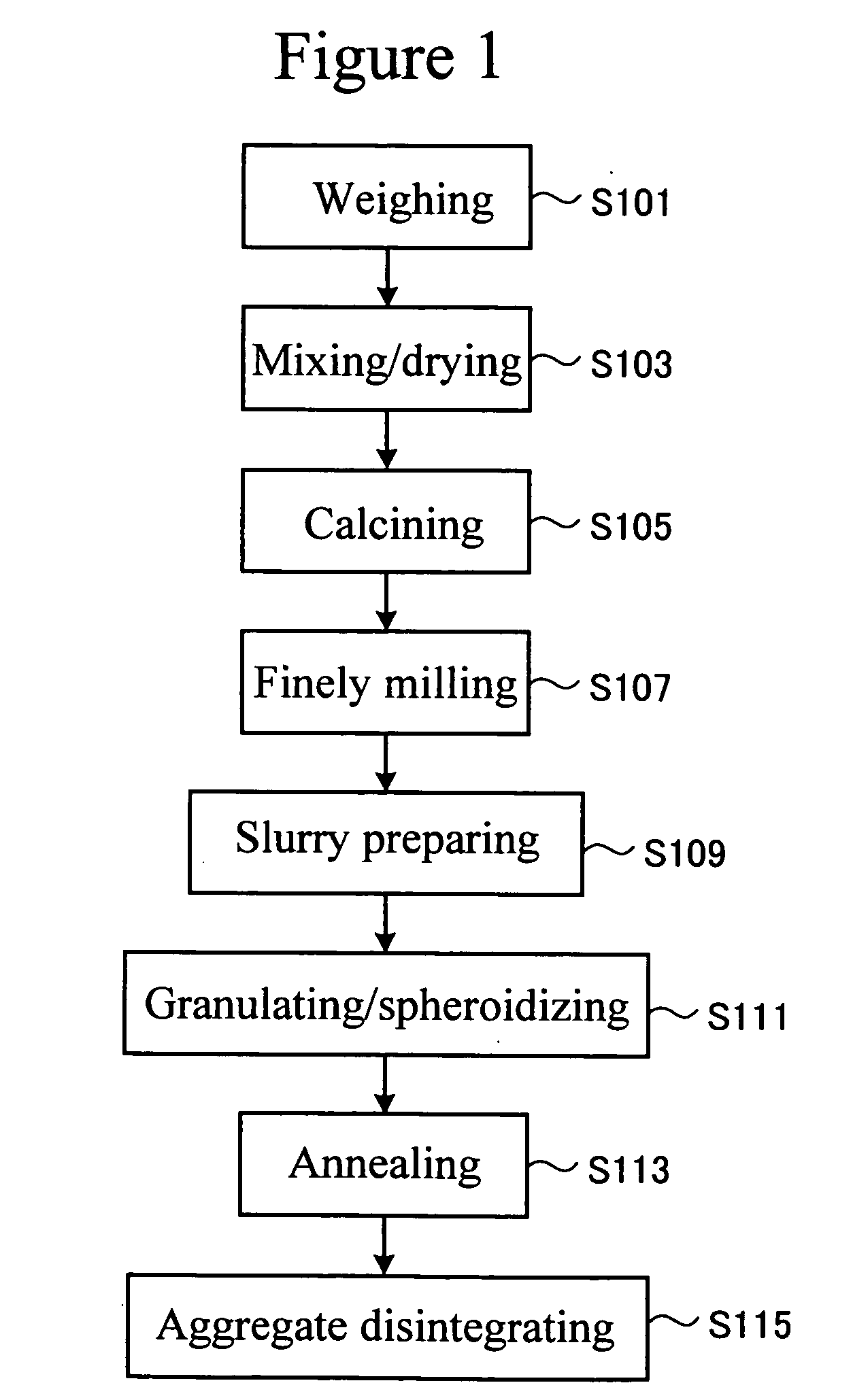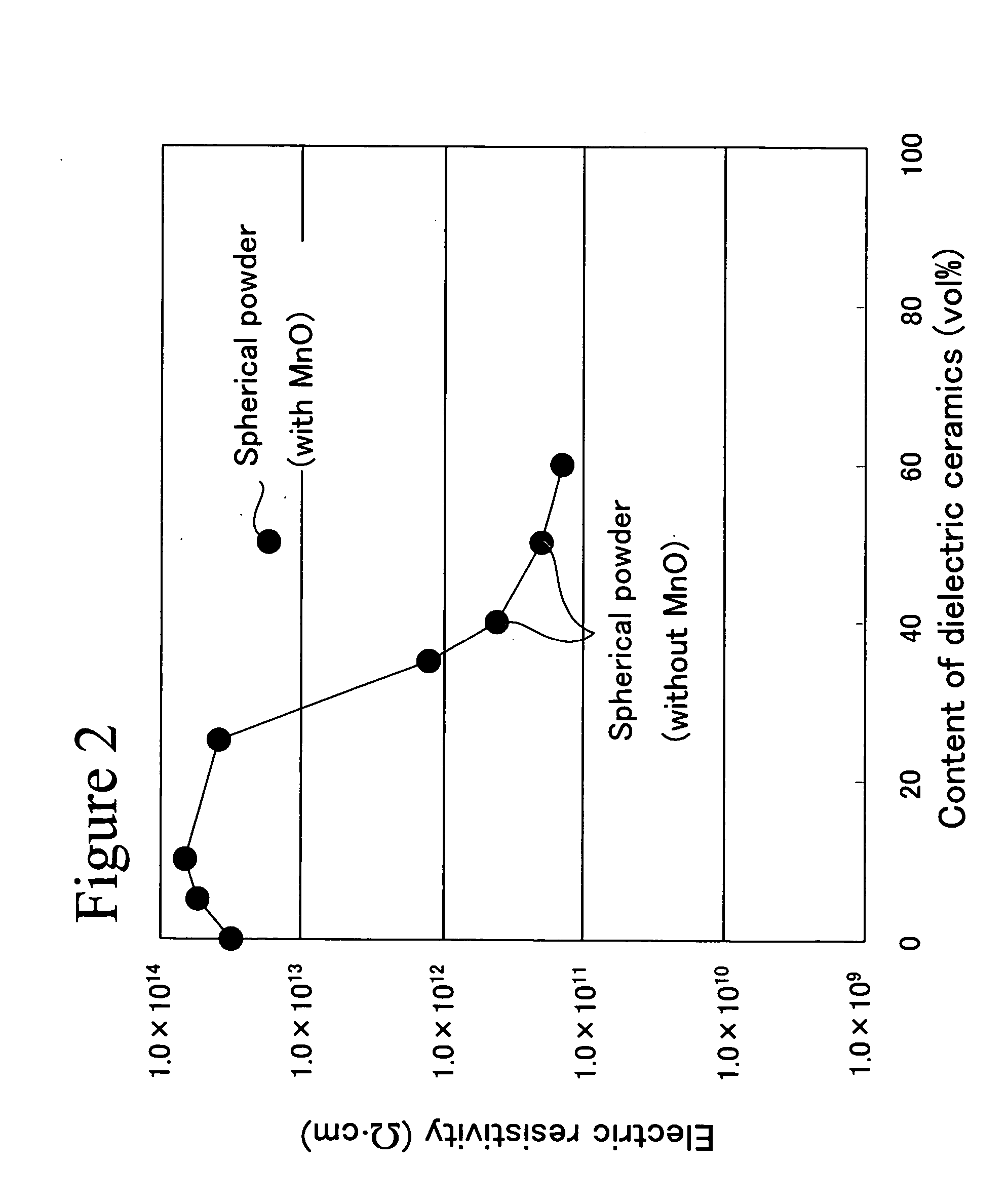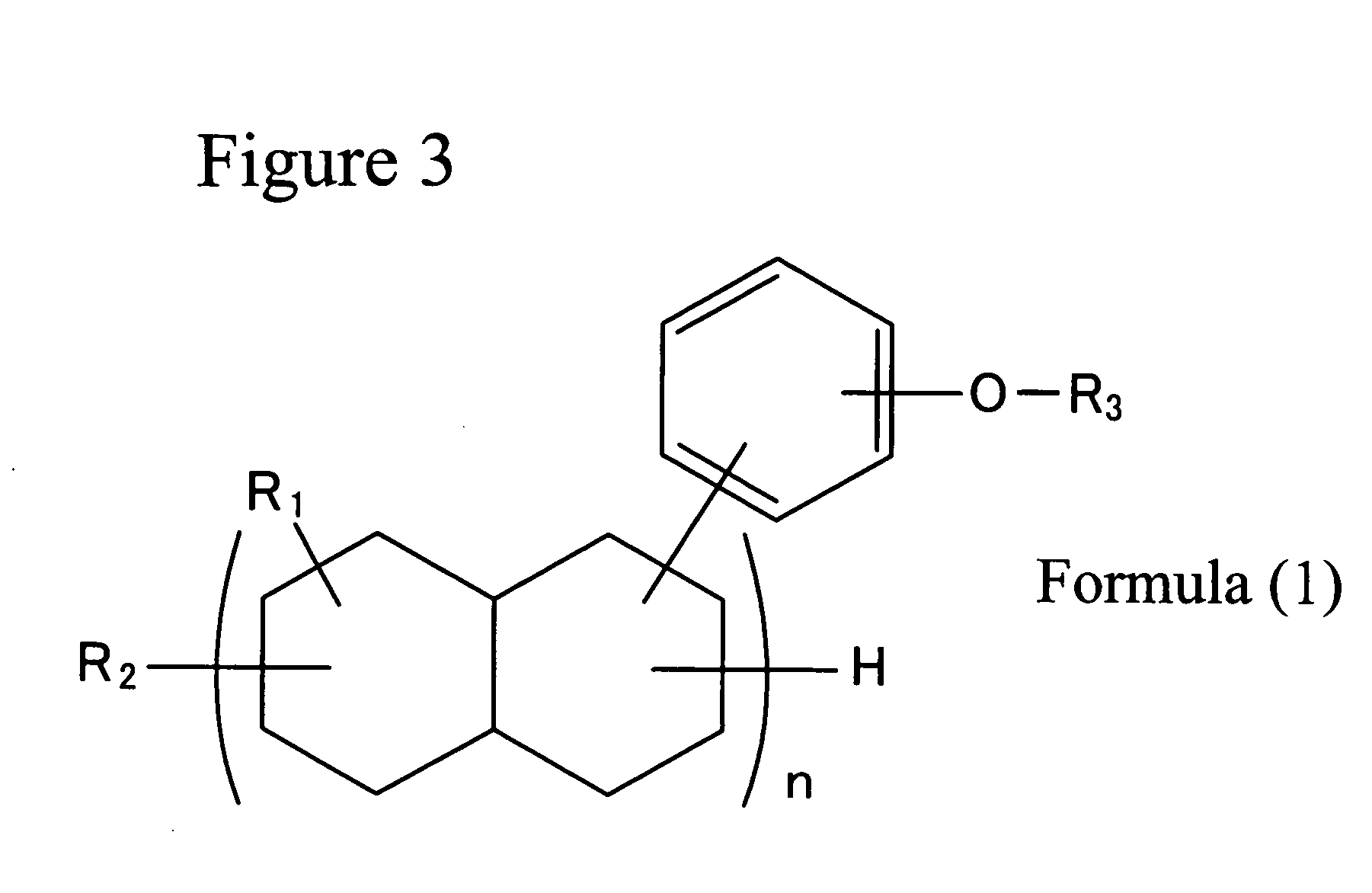Composite deelectric material and substrate
- Summary
- Abstract
- Description
- Claims
- Application Information
AI Technical Summary
Benefits of technology
Problems solved by technology
Method used
Image
Examples
experimental example 1
[0133] An experiment carried out for checking the preferable additives for the dielectric ceramic powder will be described as Experimental Example 1.
example 1
[0134] As starting material powders, a BaCO3 powder, a TiO2 powder and a Nd2O3 powder were prepared in an total amount of 1.5 kg, and mixed in pure water to prepare a slurry having a concentration of 60%. To 2.5 kg of this slurry, 30 cc of a dispersant (brand name: A-30SL (10% solution) manufactured by Toa Gosei Co., Ltd.) was added, and the mixture obtained was mixed by use of a ball mill at a rotation speed of 85 rpm for 16 hours. Then, the mixed material was dried for 24 hours, and thereafter calcined at 1225° C. in the air for 2 hours to yield a dielectric ceramics material. The dielectric ceramics material was converted into a slurry having a concentration of 60% by using water, and finely pulverized with a ball mill so as for the mean particle size thereof to be 0.4 to 1.5 μm. The slurry was dried to yield a dielectric ceramic powder. To the powder, MnCO3 was added as an additive in a content of 0.025 to 0.2 wt %, and then water was added to yield a slurry having a concentrati...
experimental example 2
[0157] An experiment carried out for checking the preferable addition amount in the case where MnCO3 is used as additive will be described as Experimental Example 2.
[0158] Dielectric ceramic powders were prepared in which the addition amount of MnCO3 was set at 0.025 wt %, 0.05 wt %, 0.1 wt %, 0.15 wt %, 0.2 wt %, 0.3 wt % and 1.0 wt %, respectively. Composite dielectric materials were prepared under the same conditions as in Example 1 except that the timing of the addition of MnCO3 and the annealing conditions were set as follows. An analysis of the compositions of the dielectric ceramic powders was conducted to confirm that BaO, Nd2O3, TiO2 and MnO were contained.
3>
[0159] Addition was made in the mixing / drying step (step S103).
[0160] Firing was conducted in the air at 1100° C. for 4 hours.
[0161] For each of the 7 composite dielectric materials, the electric resistivity was measured by means of the same method as described above. The results obtained are shown in FIG. 7. For th...
PUM
| Property | Measurement | Unit |
|---|---|---|
| Particle size | aaaaa | aaaaa |
| Frequency | aaaaa | aaaaa |
| Specific surface area | aaaaa | aaaaa |
Abstract
Description
Claims
Application Information
 Login to View More
Login to View More - R&D
- Intellectual Property
- Life Sciences
- Materials
- Tech Scout
- Unparalleled Data Quality
- Higher Quality Content
- 60% Fewer Hallucinations
Browse by: Latest US Patents, China's latest patents, Technical Efficacy Thesaurus, Application Domain, Technology Topic, Popular Technical Reports.
© 2025 PatSnap. All rights reserved.Legal|Privacy policy|Modern Slavery Act Transparency Statement|Sitemap|About US| Contact US: help@patsnap.com



